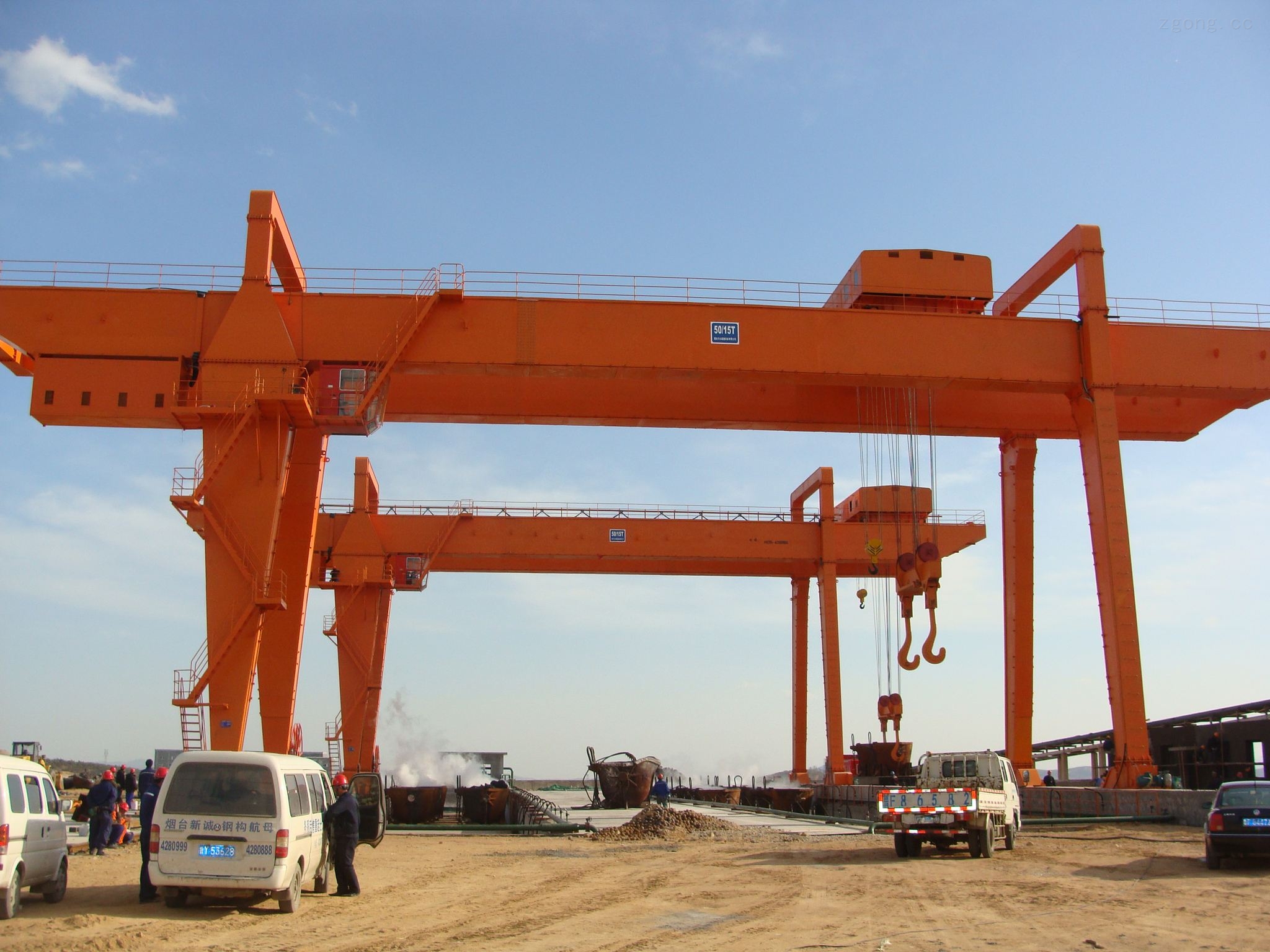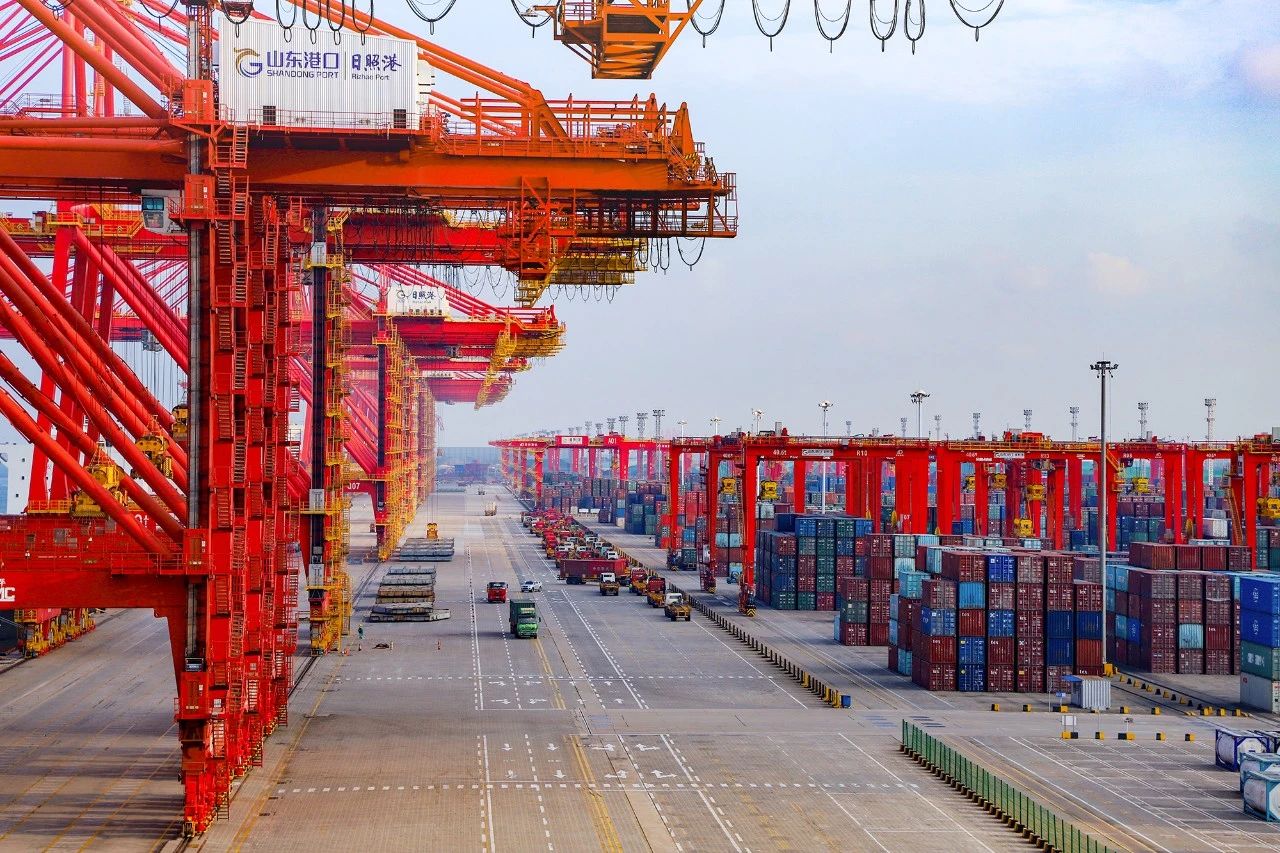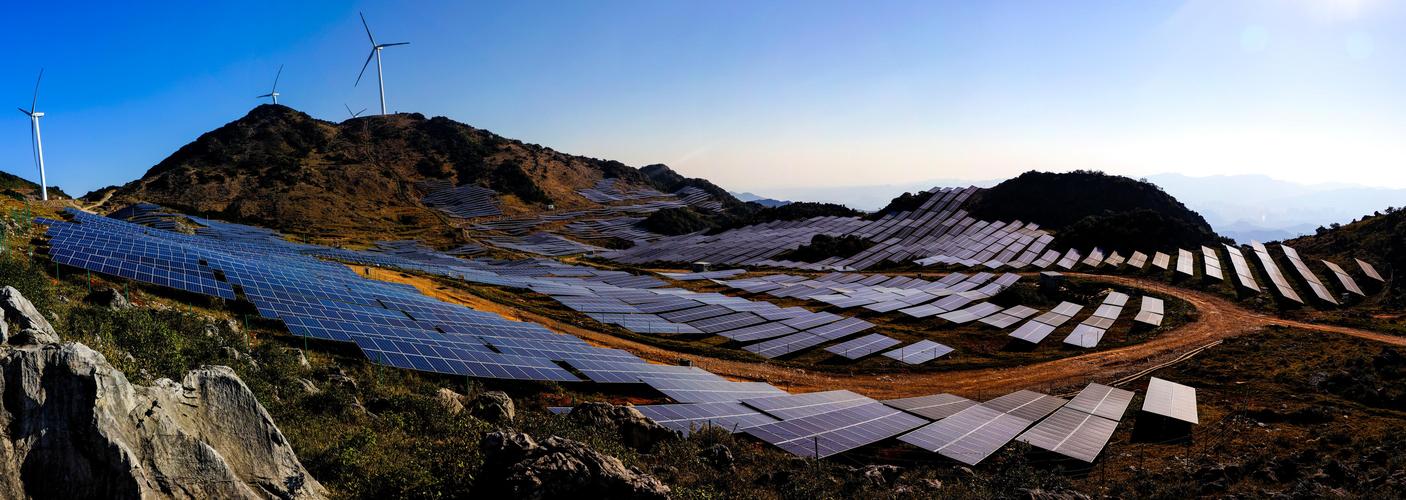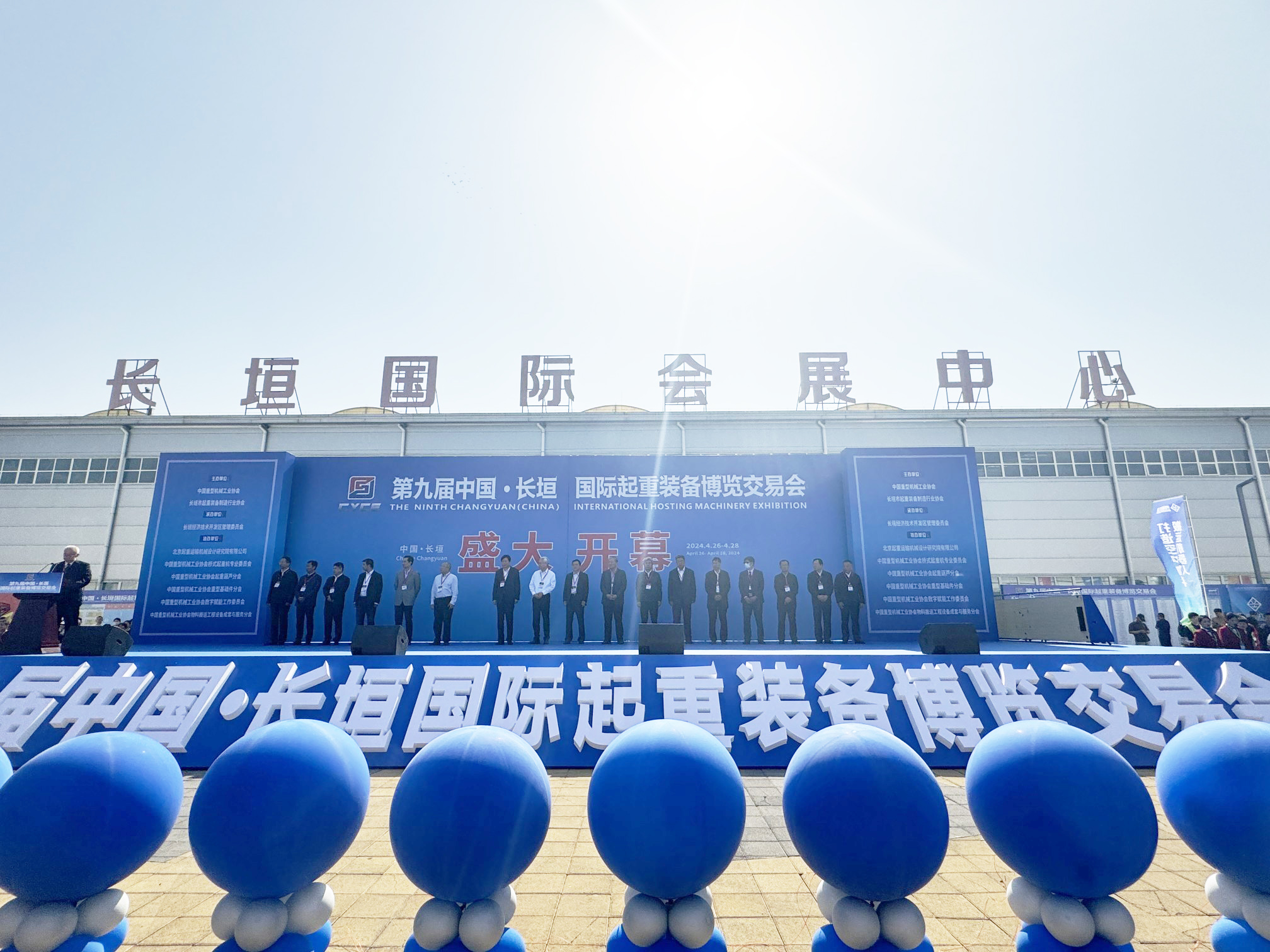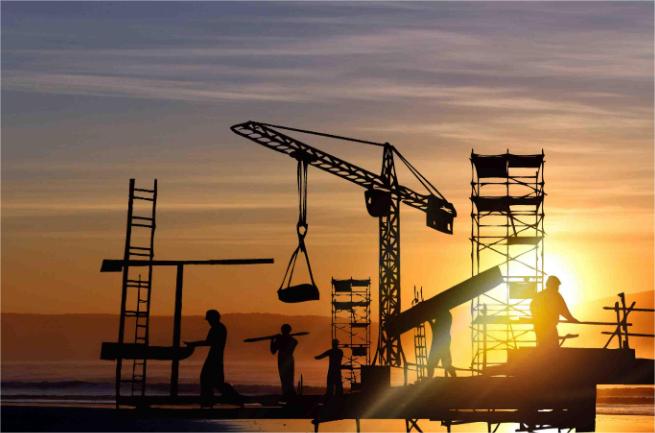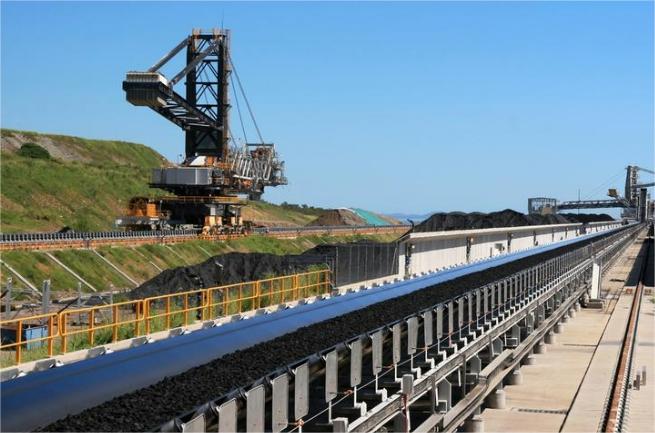Common Types of Cranes
There are various classification methods for lifting machinery, which can generally be divided into four categories based on their functions and structural characteristics: light and small lifting equipment, bridge type cranes, boom type cranes, and elevators. According to the Special Equipment Catalogue approved by the State Council in January 2004, the types of lifting machinery included in the special equipment category mainly include bridge cranes, gantry cranes, tower cranes, mobile cranes, railway cranes, gantry cranes, elevators, cable cranes, mast cranes, jib cranes, light and small lifting equipment, and mechanical parking equipment.
1. Bridge crane
Bridge crane refers to a bridge type crane that is directly supported on an elevated track by running devices at both ends of the bridge. Mainly including general bridge cranes, power station bridge cranes, explosion-proof bridge cranes, insulated bridge cranes, metallurgical bridge cranes, overhead crane electric single beam cranes, electric single beam suspension cranes, electric hoist bridge cranes, and explosion-proof beam cranes.
The main characteristics of bridge cranes are that they generally have lifting mechanisms, large vehicle operating mechanisms, small vehicle operating mechanisms, etc. They can enable heavy objects to move to predetermined locations within a limited three-dimensional space range. The motion direction of a bridge crane has vectorization, which includes vertical lifting motion, horizontal lifting motion, and composite motion composed of large and small vehicles moving at different speeds simultaneously. Due to the large lifting load and limited movement within a three-dimensional space, bridge cranes have frequent and serious lifting accidents. Therefore, various safety devices to prevent accidents must be complete and intact.
2. Gantry crane
A gantry crane refers to a bridge type crane where the bridge is supported on the ground track or foundation by two supporting legs on both sides. Including universal gantry cranes, hydropower station gantry cranes, rail container gantry cranes, universal lever assembly gantry cranes, shore container cranes, shipbuilding gantry cranes, electric hoist gantry cranes, and loading and unloading bridges.
3. Tower crane
Tower crane refers to a slewing boom type crane with a boom placed on the top of a vertical tower. Including ordinary tower cranes, power station tower cranes, and tower belt feeders.
4. Mobile crane
A mobile crane refers to a boom type crane that can be equipped with columns or towers, and can operate along a trackless road surface under loaded or unloaded conditions, relying on its own weight to maintain stability. Including tire crane, crawler crane, all terrain crane, container front lifting crane, container side lifting crane, container straddle carrier, tire type container gantry crane, truck crane, and on-board crane.
5. Railway crane
Railway cranes refer to boom type cranes that operate on railway lines, engage in loading and unloading operations, and rescue accidents such as locomotive and vehicle overturning. Including steam railway cranes, internal combustion railway cranes, and electric railway cranes.
6.Portal crane
A gantry crane refers to a slewing boom type crane with a gantry frame that runs along ground tracks and can pass through railway or other ground vehicles below. Including port gantry cranes, shipyard gantry cranes, gantry cranes with buckets, power station gantry cranes, port gantry cranes, fixed cranes, and hydraulic boom cranes.
7. Elevator
Including curved construction elevators, boiler furnace maintenance platforms, steel cable hydraulic lifting devices, power station sliding mode devices, ship lifts, construction elevators, simple elevators, lifting operation platforms, and high-altitude work vehicles.
The movement of this type of machinery is limited to vertical ascent and descent.
8. Cable crane
Cable crane refers to a cable type crane that holds the two ends of the cable fixed to the top of the two supports. Including fixed cable crane, swing cable crane, translational cable crane, and radial cable crane.
9. Mast crane
Mast crane refers to a slewing boom type crane where the lower end of the boom is hinged to the lower part of the mast, and the upper end is connected to the top of the mast through a steel wire rope. The mast itself is supported by the top and bottom to maintain an upright position. Including fixed mast cranes and mobile mast cranes.
10. Rotary arm crane
A rotary arm crane refers to a boom type crane in which the retrieval device is suspended at the arm end or on a lifting trolley that can run along the cantilever, and the cantilever cannot pitch. Including column type rotary arm crane, wall type rotary arm crane, and balanced cantilever crane.
The main feature of light and small lifting equipment is that there is usually only one lifting mechanism, which allows the heavy object to perform a single lifting motion. Of course, in some places, it can also be used for horizontal transportation. For example, a winch can perform both lifting and horizontal movements, but the heavy object can only move in one direction. In other words, this is both a lifting device and can be used as a horizontal transportation device.
11. Light and small lifting equipment
Light and small lifting equipment refers to lightweight lifting machinery with compact structure, simple operation, and a projection of the operating range mainly based on points and lines. Including power transmission and transformation construction poles, power station tensioning equipment, internal combustion balance weight forklifts, battery balance weight forklifts, internal combustion side forklifts, plug-in forklifts, forward moving forklifts, three-way stacking forklifts, pallet stacking trucks, explosion-proof forklifts, wire rope electric hoists, explosion-proof steel wire rope electric hoists, ring chain electric hoists, pneumatic hoists, explosion-proof pneumatic hoists, and belt electric hoists.
12. Mechanical parking equipment
The mechanical or mechanical equipment system used to access parked vehicles is called a mechanical parking device. It is a complete set of equipment that integrates machinery and electricity. This mainly includes mechanical parking equipment for lifting and horizontal movement, vertical circulation, multi-layer circulation, flat movement, lane stacking, horizontal circulation, vertical lifting and descending, simple lifting and descending, and car specific elevator parking equipment.



